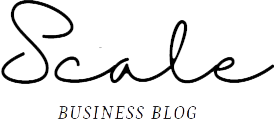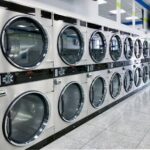When Should You Call a Property Saver for Water Damage?
In our homes, incidents of water damage can occur for various reasons, from pipe bursts to heavy rainfall. Dealing with such situations effectively is essential, as delaying or ignoring them can lead to severe structural damage and potential health hazards. This article aims to provide a comprehensive guide on when you should reach out for the professional help of a property saver to handle water damage concerns and the various processes involved in resolving the issue.
Understanding Water Damage and the Need for a Property Saver
Water damage isn’t always easy to discover until the consequences are dire. It can deteriorate your house’s structural stability and create a conducive environment for harmful pathogen growth, such as molds. Like a disaster cleanup provider, a property saver proactively identifies, assesses, and resolves water damage issues efficiently. They are equipped with specialized tools and follow standard procedures to minimize the water damage impact, making your house habitable and safe again.
The Indicators of Serious Water Damage
Determining the existence of serious water damage in your home at an early stage can be a significant factor in limiting the extent of the damage incurred. Identifying these signs often can deter small issues into major, costly problems. Let’s discuss some of these indicators in detail:
- Physical Signs on Structures: One of the first signs of water damage is usually visible discoloration on your ceilings, walls, or floors. This could take the form of brown patches, rings, or spots. These are often accompanied by swelling or warping in the same areas as water begins to saturate building materials. In terms of your home’s exterior, water damage may manifest through unusual water pooling or soil erosion around the base of your house, indicative of poor drainage.
- Changes in Paint or Wallpaper: Both paint and wallpaper will react noticeably to extended exposure to moisture. This could be in the form of flaking, peeling, or bubbling. If your walls start to absorb moisture, the adhesive between the wall and paint or wallpaper may lose its grip, leading to noticeable surface changes.
- Musty Odors: The presence of persistent, musty odors within your home can often imply the existence of hidden water damage. A distinct, unpleasant smell develops when areas get damp without proper drying. This is a significant indicator of potential mold growth or water damage in difficult-to-see places like inside walls or under floorboards.
- Sudden Surge in Utility Bills: An unexplained increase in your water bill may indicate a water leak leading to water damage. Unresolved leaks can result in substantial water wastage over time. Hence, it is essential to identify and rectify any issues as soon as possible to prevent large-scale water damage.
- An Increase in Pest Activity: Unexpected or unusual pest activity can sometimes indicate unseen water damage. Various pests, including ants, cockroaches, and termites, are attracted to moist environments. If you have noticed an increase in pest activity around your property, it may be worthwhile to investigate the cause, as it could point to water damage.
- Mold Growth: Visible mold growth might already be a late-stage sign of water damage. Molds thrive in moist, dark environments, often due to water leaks or high humidity levels. Continuous mold exposure can lead to health issues, making dealing with water damage at its inception crucial.
Recognizing serious water damage indicators early on can save you from structural and financial burdens. When these signs appear, reaching out to a professional like a property saver would be advisable to halt and reverse the damage efficiently.
Understanding the Restoration Process
Water damage restoration involves several steps, including initial assessment, water removal, drying, sanitization, and restoration. Employing professional assistance, such as an expert water damage restoration service, is crucial in managing the situation effectively. They use high-grade equipment and have the expertise to identify the degree of harm, and undertake water removal and holistic damage restoration processes.
Dealing with Electrical Systems Post Water Damage
Water and electricity pose a substantial combined threat. A property saver would advise you to turn off the power and avoid touching electrical appliances or switches in water-soaked areas. An electrician should inspect appliances and wiring after water removal to determine their safety.
Filing Insurance Claims for Water Damage
Clear documentation of damage for insurance claims is vital. Property savers can guide you through this procedure and help interpret often complex insurance policies to ensure you gain optimal benefits.
Restoring Water-Damaged Items
Quick action can save many water-affected items. Professionals can guide the safe removal and effective drying of these items, reducing losses.
The Health Risks and the Role of Sanitization
Moisture promotes the growth of molds which pose a serious health risk. Therefore, effective sanitization of the area post-water removal is essential.
Maintaining Structural Integrity and Preventive Measures
Water damage disturbs the structural integrity of your house. Property savers guide in restoring this and help establish preventive measures like regular inspections and maintenance to avoid future water damage.
Conclusion
Effective water damage management involves timely recognition and professional intervention. A property saver does more than merely remove the water; they alleviate the safety risks, minimize potential damages, assist in insurance claims, ensure effective sanitization, and guides toward future prevention strategies. Take action at the first sign of water damage to safeguard your house and the health of its inhabitants.







